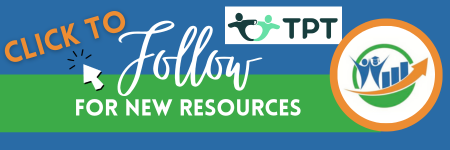Empowering Students to Reteach: Building Life-Long Learners in Math Class
- William Reed
- Aug 19, 2024
- 4 min read
Updated: Oct 7
By William Reed
Introduction
At the start of each new school year, math teachers often find themselves reteaching skills that students haven't used for months. This cycle can lead students to rely on teachers to reteach material, rather than internalizing it. As a former classroom teacher, I realized the need to shift this dynamic and empower students to take charge of their own learning.
The Importance of Life-Long Learning
Many school mission statements include the phrase “students to be life-long learners.” Do you have this phrase as part of your district’s or school’s mission statement? Do you take this phrase to heart and teach your students how to be “life-long learners?” We often provide information without teaching students how to learn independently. True life-long learning involves the ability to reteach oneself and apply previously learned knowledge to new situations.

Identifying the Problem
In my teaching experience, students became accustomed to reteaching and did not internalize their learning. They expected the information to be retaught later, leading to a lack of engagement and responsibility for their own learning. Recognizing this, I made a conscious decision to change my approach and empower my students to be independent learners. Students must have the ability to learn and reteach themselves information on their own.
Looking at Myself and My Learning Process

I know in my own life; I look up information I previously learned and reteach myself what I needed to know to be successful. Writing a resume or a cover letter are two perfect examples. What I am suggesting is to intentionally think about what students will need to know to be successful for the lesson. Using your knowledge and expertise, identify what students should already know to be successful. Incorporate in your lessons opportunities for students to research and re-familiarize themselves with the information and skills BEFORE they are expected to use them.
Strategies to Encourage Self-Reteaching
To encourage self-reteaching, I integrated activities that required students to revisit previous knowledge. I included questions, videos, and web-quests in my lessons, prompting students to discover and share their findings. This approach helped students recognize the importance of foundational skills and how math concepts build on each other.
Practical Classroom Applications
Implementing self-reteaching can be simple and effective. For example, I asked students to explain concepts like "Order of Operations" or "Factors" on assignments before they will be used in future lessons. Simple rewards and positive reinforcements for students work on these tasks is imperative. This motivated them to research and recall information. Additionally, I assigned tasks that required them to find and summarize key ideas related to upcoming lessons. I would ask students to do some simple research and find sites that discuss a specific topic I knew we were going to be using the next day in the lesson. For example, “What are the key points and key ideas that you use when graphing a line?” A classroom discussion, having students share their findings, gives the ownership of learning and reteaching to the students and not on the teacher.
Students Want to Learn

I believe that students are inherently curious. If they didn’t know or have forgotten information they had previously learned, guiding them with tasks to learn that information is imperative. With you directing students to sites with the necessary information, students will scan the information reteaching themselves pertinent concepts.
Building on Success: Continuous Improvement
This process is ongoing and requires continuous reinforcement. By noting successful strategies and discussing them in professional learning communities (PLCs), teachers can refine their lessons and better support student learning. Although it may not work perfectly at first, persistence and follow-up will yield positive results over time.
Long-Term Benefits for Students
The benefits of self-reteaching extend beyond the classroom. Former students have returned to share how they use these skills in college and other courses. They appreciate the independence and confidence gained from learning how to reteach themselves, which is invaluable for their future success. More than once, I would get former students saying, “Mr. Reed, I wasn’t a big fan of looking up things we had previously learned and forgotten, but now I find myself looking things up, so I am prepared and ready to complete my work.”

Conclusion
As educators, our goal should be to teach students how to learn and reteach themselves. By integrating self-reteaching strategies into our lessons, we empower students to become life-long learners, equipped with the skills they need to succeed beyond our classrooms. This does not come inherently to students. They must be shown how to do this. As the new school year begins, consider incorporating these methods to see the positive impact on student learning and engagement.
For more information, ideas, and resources for students’ ownership of reteaching, check out my August 2024 Newsletter. You can subscribe to my blog and newsletter here. https://www.incompassinged.com/ or use the QR Code below.





